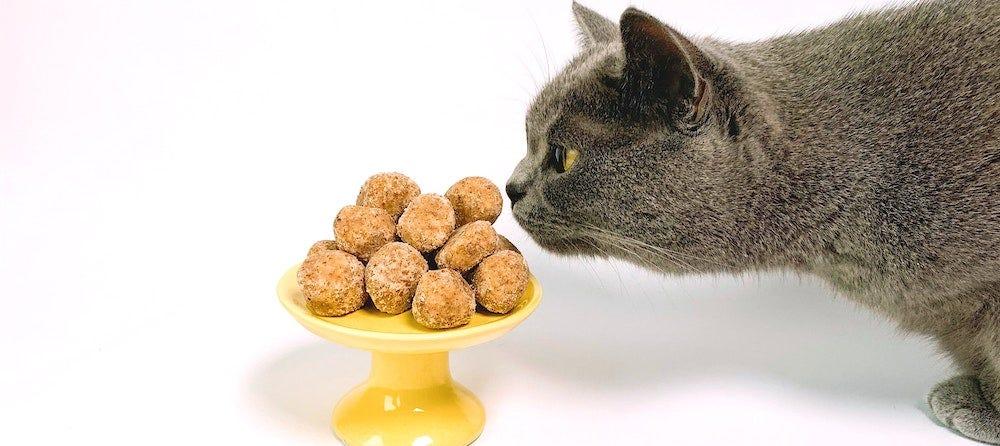Autumn is mushroom-hunting season! As the leaves turn, fungi sprout up in abundance overnight. Whether you have a cat that likes to prowl the outdoors or a habit of sharing food with your furry friend, you may have wondered: Can cats eat mushrooms? In most cases, the answer is no. Find out which mushrooms may be deadly for pets.
Some cats crave mushrooms
It seems counterintuitive to cats’ carnivorous diets, but some felines go loony for mushrooms. According to NPR, it’s not fungi in particular that cats are after, but protein—or more specifically, the “umami flavor of a wide array of amino acids in protein.”
So, can cats eat mushrooms? Cats need protein, but they should get it strictly from animal meat. Veterinarians caution against giving your cat or dog mushrooms. Why? Not only are there better methods of consuming protein, but, as is the case with people, certain varieties of mushrooms can be toxic to pets—even deadly.
Can cats eat mushrooms that are safe for humans?
If your cat eats a cooked mushroom off your dinner plate, you probably don’t need to worry about their health. (Caveat: Make sure that the mushroom isn’t cooked in sauce containing garlic, onions, or other human food harmful for cats.) Keep an eye on your cat for the next 24 hours to be safe.
What are the symptoms of mushroom toxicity?
Because there are so many types of mushrooms, there are also so many ways the various species can negatively affect your cat. Eating these mushrooms may lead to liver failure and death, and symptoms such as vomiting, black-tarry stools, decrease in appetite and energy, and yellowing of the eyes and skin often don’t arise until 6-24 hours after ingesting the poisonous fungus. There are some mushrooms like Chlorophyllum molybdites or Psilocybe spp that can show symptoms as quickly as 15 minutes to a couple of hours. Even more frightening, your pet may appear to recover, but in three to seven days, liver failure, along with seizures and internal or external bleeding, can occur.
Here is a list of the most common symptoms; the severity of the symptom is typically correlated with the amount of mushroom ingested.
- Lethargy or weakness
- Nausea/vomiting/dehydration
- Diarrhea
- Inappetence or gastrointestinal pain/signs
- Abnormal gait or difficulty walking
- Excessive drooling
- Seizures or tremors
- Jaundice (yellowing of the eyes and skin)
- Agitation or vocalization
- Increased urination
- Bleeding
Can mushroom poisoning be treated?
Success of treatment is usually dependent on how quickly your cat receives care; what that care looks like is going to depend on the symptoms exhibited and the vital information you as the pet owner can give the veterinary staff, such as how long ago something was eaten, how much (if you saw it), etc. Treatment is based on supportive care and the results of other diagnostic tests in light of how your cat is doing. Unfortunately, in some cases, even the most aggressive treatment is not enough to undo the damage to the organ systems like the gastrointestinal tract, liver, and kidneys.
Which mushrooms are deadly?
It’s estimated that the Amanita genus (including the first four mushrooms on our list) is responsible for 95% of fatalities resulting from mushroom poisoning. Death cap mushrooms (Amanita phalloides) specifically are thought to cause at least 50% of all mushroom-related deaths in humans and are most frequently the culprit in animal deaths, as well.
If you have a dog or an indoor-outdoor cat, be sure to scout the area for mushrooms this fall. Keep an eye out for the following toxic varieties of mushrooms. NOTE: This is not a complete list, and image accuracy may vary.
Death cap (Amanita phalloides)
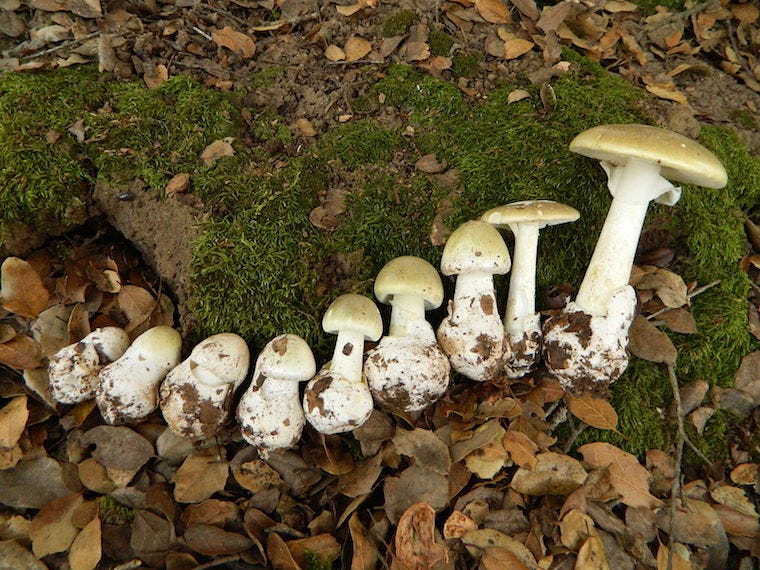
Destroying angel (Amanita bisporigera and A. ocreata)

Fool’s mushroom (Amanita verna)
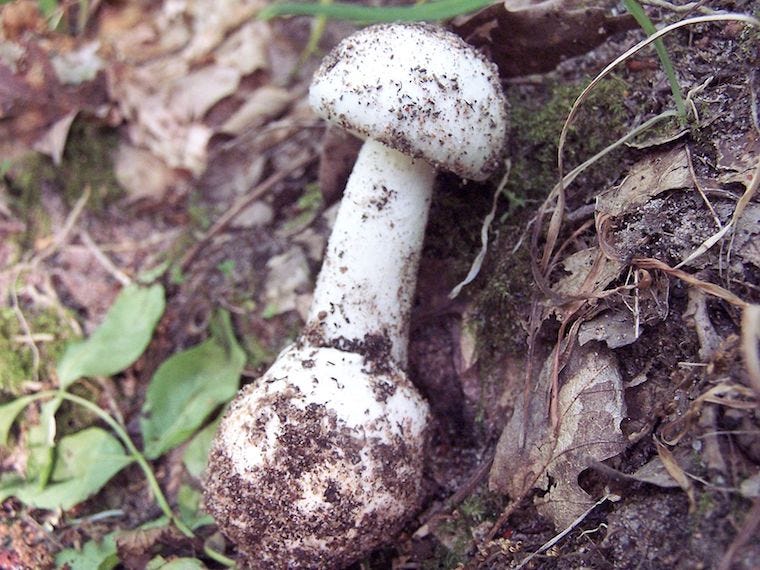
Smith's lepidella (Amanita smithiana)
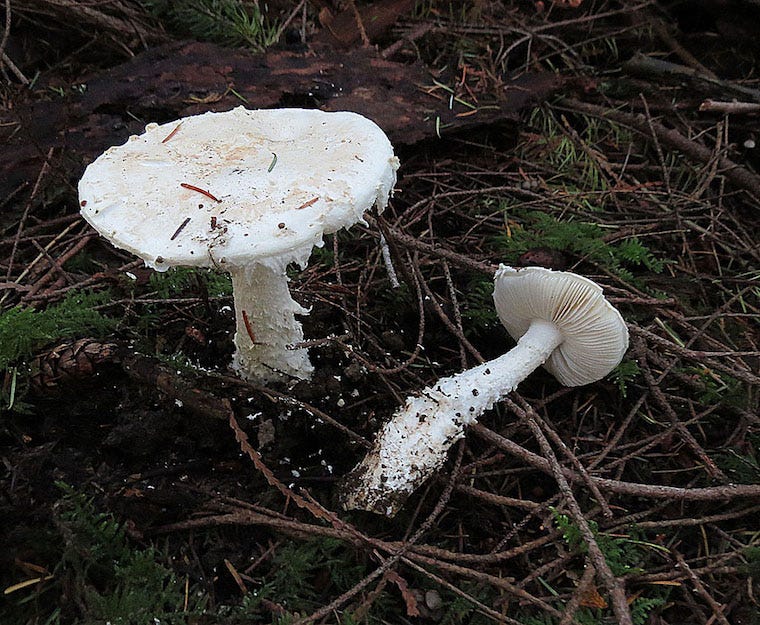
Autumn skullcap or autumn galerina (Galerina marginata)

Deadly parasol or deadly lepiota (Lepiota subincarnata)
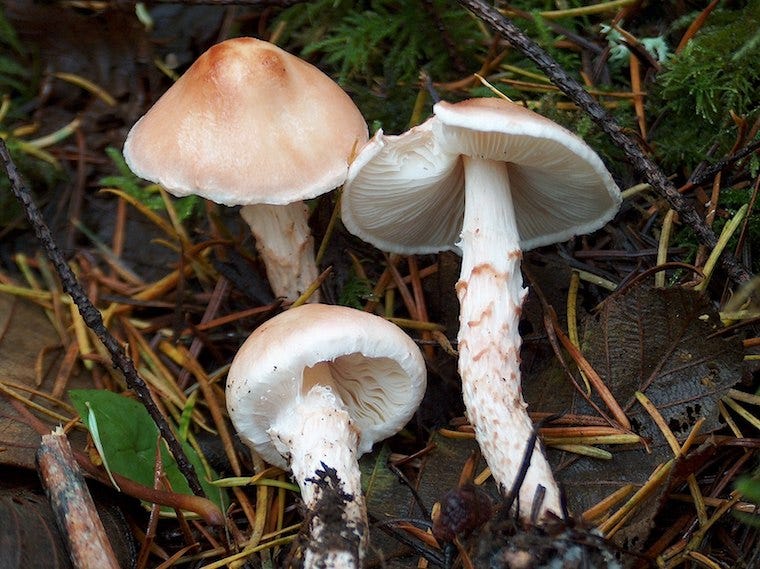
Conocybe filaris, also known as Pholiotina rugosa
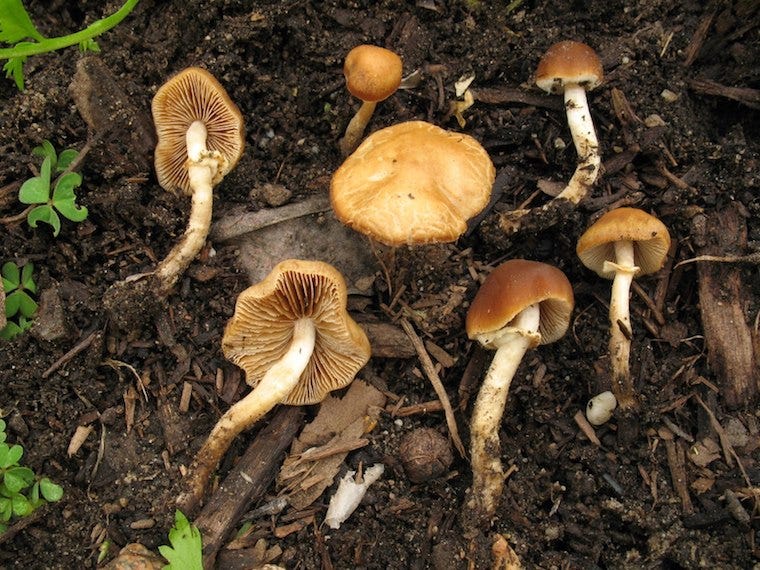
Brown roll-rim, common roll-rim, poison pax (Paxillus involutus)
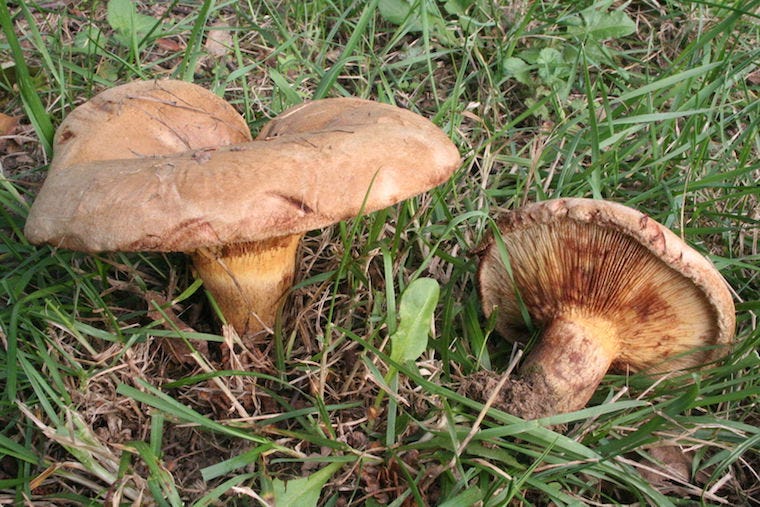
False morel (Gyromitra)
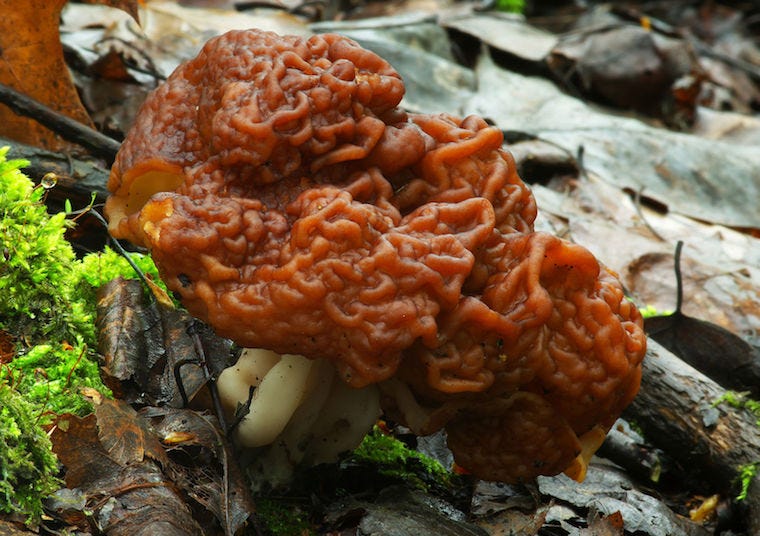
Ivory funnel or false champignon (Clitocybe dealbata and C. rivulosa)

Deadly webcap (Cortinarius rubellus)
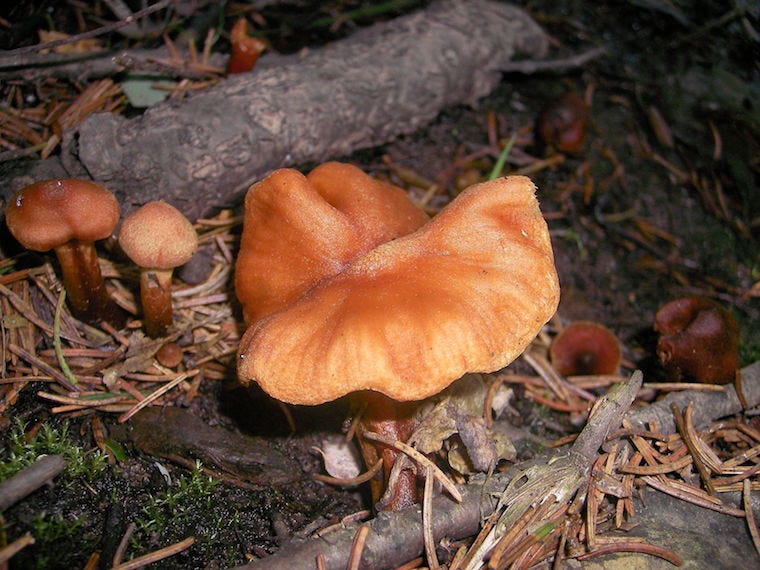
Other toxic mushrooms
The following mushrooms may not be fatal, but can produce unpleasant gastrointestinal issues—with symptoms like severe vomiting and diarrhea, followed by dehydration—and effects on the parasympathetic nervous system, such as decreased heart rate and heavy drooling.
Fly agaric (Amanita muscaria)

Panther cap (Amanita pantherina)

Livid agaric, livid entoloma, lead poisoner (Entoloma sinuatum)
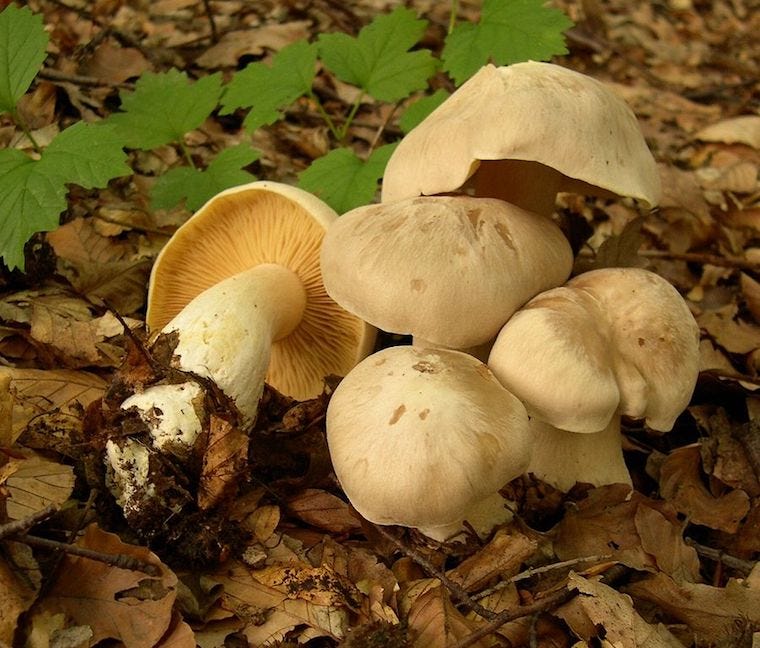
Sulfur tuft (Hypholoma fasciculare)

Jack-o'-lantern mushroom (Omphalotus illudens)

Also beware magic mushrooms

Can cats eat mushrooms … of the magic variety? No, not even those! According to the ASPCA, your cat may experience unsteadiness on the feet, agitation, mild to severe depression, sensitivity to sound and touch, tremors, vomiting, and/or diarrhea if they ingest magic mushrooms (Psilocybe cubensis).
What to do if your cat eats a wild mushroom
If you notice your cat eating a wild mushroom, assume the worst: Contact your veterinarian or animal hospital and bag up a sample of the mushroom for identification. Depending on the situation, the vet may decide to induce vomiting, administer activated charcoal, and provide IV fluids and other medications as needed.
What to do if your cat has symptoms of poisoning
As stated, an incomplete list of mushroom poisoning symptoms in cats includes severe vomiting, diarrhea, agitation, decrease in appetite and energy, drooling, lethargy, seizures, and bleeding from orifices. If you think your cat was poisoned, call your veterinarian or The ASPCA Animal Poison Control Center (888-426-4435) immediately for life-saving advice. You can’t induce vomiting in cats at home safely—so most of the time, an emergency vet visit is a must!
So, can cats eat mushrooms? Now you know why the answer is no.
Sources:
- ASPCA.org
- Pet Poison Helpline
- Vetstreet.com
- Mushroom Toxicity
- Overview of Mushrooms Toxic to Animals
- Mushroom Poisoning in Cats


